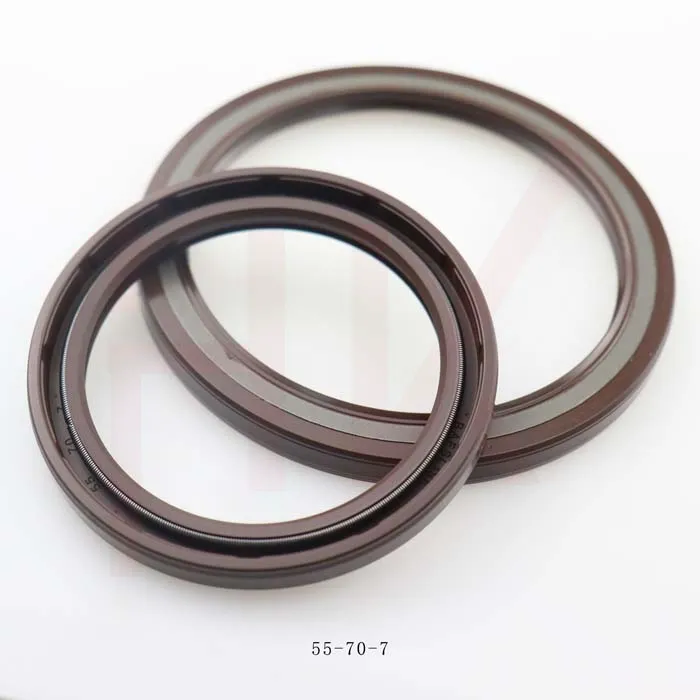Dec . 12, 2024 18:04 Back to list
hydraulic oil seal sizes
Understanding Hydraulic Oil Seal Sizes Key Factors and Considerations
Hydraulic systems are vital components in various industrial and mechanical applications, providing efficient power transmission through fluids. Integral to these systems are hydraulic oil seals, which serve to prevent fluid leaks, protect against contaminants, and maintain optimal pressure within the system. Selecting the correct sizes for these seals is crucial for ensuring the longevity and efficiency of hydraulic machinery. This article will explore the importance of hydraulic oil seal sizes, the factors that influence their selection, and best practices for ensuring an effective seal fit.
The Importance of Proper Seal Size
The primary purpose of a hydraulic oil seal is to prevent hydraulic fluid from leaking out of the system while simultaneously keeping external contaminants from entering. If a seal is too large, it can lead to excessive wear and premature failure. Conversely, a seal that is too small may not create a proper fit, allowing fluid to escape or dirt and debris to infiltrate the hydraulic system. Thus, proper sizing is critical for maintaining the efficacy and reliability of hydraulic systems.
Factors Influencing Seal Size Selection
1. Type of Hydraulic System Different systems demand different types of seals. For instance, a high-pressure hydraulic system may require seals that can withstand greater stress and maintain integrity under varying temperatures and pressures. Understanding the specific requirements of the system is the first step in determining the appropriate seal size. 2. Operating Conditions The environment in which a hydraulic system operates can significantly influence the choice of seal size. Factors such as temperature fluctuations, presence of dirt or moisture, and the types of fluids used in the system can dictate the need for specific seal materials and sizes. For example, higher temperatures may cause certain materials to expand, altering the fit of the seal.
3. Seal Material Hydraulic oil seals come in a variety of materials, including rubber, polyurethane, and PTFE, each of which has distinct properties affecting elasticity and durability. The choice of material can impact the seal’s performance and longevity, and manufacturers often provide guidance on which materials are best suited for different operating conditions.
4. Installation Method The way in which a seal is installed can also affect its size requirements. Proper installation techniques are essential to achieving a tight fit. In some cases, the seal may need to be slightly compressed during installation to ensure a proper seal and prevent leaks.
hydraulic oil seal sizes

Best Practices for Selecting Hydraulic Oil Seal Sizes
1. Refer to Manufacturer Specifications One of the most reliable ways to determine the correct seal size is to refer to the hydraulic system manufacturer’s specifications. These guidelines take into account various factors, including the type of system, operating conditions, and expected performance.
2. Measure Accurately When replacing seals, it is essential to measure the existing seal accurately. Use calipers to take precise measurements, including the inner diameter, outer diameter, and width of the seal. This step ensures that the new seal will fit correctly into the designated groove.
3. Consult Experts If there is any uncertainty about the correct seal size, consulting with experts or engineers who specialize in hydraulic systems can provide valuable insights. These professionals can offer recommendations based on their experience and knowledge of various applications.
4. Test and Validate After installation, it is crucial to test the hydraulic system under operational conditions to ensure that the seal maintains its integrity. Look for signs of leakage or contamination, and be prepared to make adjustments if necessary.
Conclusion
Selecting the right hydraulic oil seal sizes is essential for the smooth functioning of hydraulic systems. By considering factors such as system type, operating conditions, seal material, and installation methods, users can make informed decisions that enhance the performance and longevity of their equipment. Proper sizing not only minimizes the risk of leaks and contamination but also contributes to the overall efficiency and reliability of hydraulic operations. In an industry where every detail matters, ensuring that oil seals are correctly sized is a fundamental step towards operational excellence.
-
TCN Oil Seal Metal Ring Reinforcement for Heavy Machinery
NewsJul.25,2025
-
Rotary Lip Seal Spring-Loaded Design for High-Speed Applications
NewsJul.25,2025
-
Hydraulic Cylinder Seals Polyurethane Material for High-Impact Jobs
NewsJul.25,2025
-
High Pressure Oil Seal Polyurethane Coating Wear Resistance
NewsJul.25,2025
-
Dust Proof Seal Double Lip Design for Construction Equipment
NewsJul.25,2025
-
Hub Seal Polyurethane Wear Resistance in Agricultural Vehicles
NewsJul.25,2025
-
The Trans-formative Journey of Wheel Hub Oil Seals
NewsJun.06,2025
Products categories
















